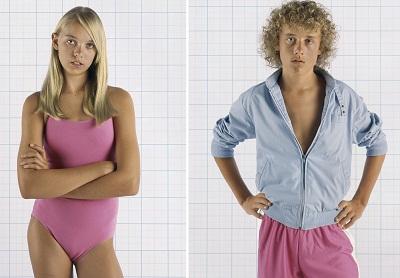On view now, The Sun and Other Stars: Katy Grannan and Charlie White fills three galleries in BCAM with photographic portraits, videos, and other ephemera by these two California artists. Grannan’s photographs depict adults captured on the street in front of stark white walls, while White’s portraits largely depict blue-eyed blonde teenagers in a studio setting. Unframed’s Stephanie Sykes talked to White in more detail about his works in the exhibition.
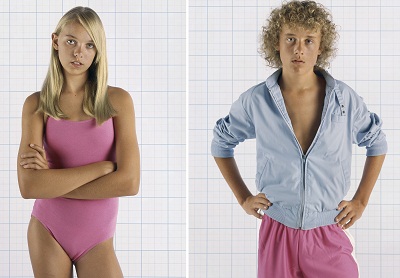
Charlie White, Girl Posed (left) and Boy Posed (right), 2008, courtesy of the artist and Loock Galerie, Berline, © Charlie White
What questions animated the work currently on display in the exhibition?
The question that resides beneath most of my work regards the location of tension, and how tension, both within the image itself, and occurring between the viewer and the image, results in a critical relation to social and/or personal tolerances. From this investigation (which I've approached through various subjects—from the monster, to the surrogate, to historical benchmarks), I have arrived at the American teen image and the power of this subject in American culture.
As a result, the exhibition spans a few years of related work dating back to 2004, when I first began to document teens and to collect teen-related ephemera. However, image-wise, the starting point within the exhibition is the two portraits, Boy Posed and Girl Posed, both 2008. These two works mark my transition to portraiture and, more importantly, to the overt study of teen subjects. Although the teen image has been present in my work for much longer, it was around the time of creating these works that I began to strip away fiction, narrative, and place, and to focus on subject alone, clinically and without story. From these works evolved a number of new directions including film (American Minor), animation (OMG BFF LOL, and most recently A Life in B Tween) , and performance (Casting Call). I think the exhibition covers all of these tangents and offers a varied understanding of how my questioning of tension has arrived at the complex and lush space of the popular teen image and its numerous forms.
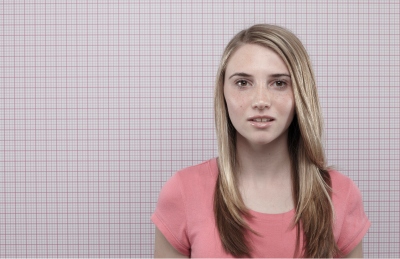
Charlie White, From the series “Casting Call,” 2010, LACMA, purchased with funds from the Ralph M. Parsons Fund, © Charlie White
Can you tell us how you chose, approached, and worked with the subjects depicted in your portraits?
This varied. In Casting Call, I followed an industry standard and laid that out to be observed by the public, and in the studio images I enacted a somewhat similar model—casting, selecting, meeting, and ultimately shooting each subject. Working with minors requires the parents' involvement, and in many cases I came to know my subjects and explain what I was aiming to capture in their image. I do not ever know my subject, however; that is, I do not photograph people I have a personal understanding of. My subjects are selected based on their image, what they evoke. For example, the young woman in Girl Posed had magical blonde hair, like a Barbie doll, and the boy of Boy Posed brought to mind 70's heart throb Christopher Atkins. These forces affected my selection and direction of each subject.
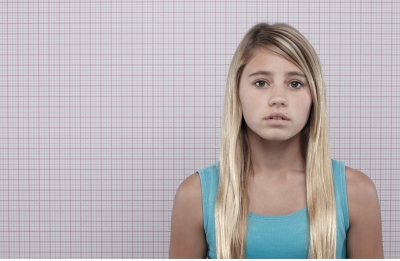
Charlie White, From the series “Casting Call,” 2010, LACMA, purchased with funds from the Ralph M. Parsons Fund, © Charlie White
This exhibition marks the first time you and Katy Grannan have been formally paired. How do you feel your work relates to one another?
I think it offers a bridge between practices that most people would not afford, and thus a view of how seemingly different approaches relate and reinforce one another. For example, the separate approaches of street photography versus studio photography, or of looking at adult subjects versus children, or creating a candid cultural record versus more clinical documents. When these different approaches are collapsed within the cultural intersection of ambition, desire, and loss, they no longer divide along the lines of how they are made. Rather, they can be seen in terms of why they are made that way and how that process allows certain ideas and issues surrounding the subject to be conveyed.
Although your series are very different from one another, they both highlight dichotomies between anonymity versus visibility, actuality versus aspiration. Can you elaborate?
I can speak to my work in relation to actuality versus aspiration, which I think sums up one aspect of the exhibition's pathology, and the invisible force behind many of the motivations located in both the subject's desire to be documented and the manner in which the document is formed. The works on display are in a continual dialog; the positions of the Boy Posed and Girl Posed echo the poses of Magazine Collection, the Casting Call images become a log much like a stack of head shots, mug shots, or face shots accompanying online posts, the Entertainment Translation Studies are informed by the almost imperceptible Barbie images within Research Material, and all of the work is offered a leitmotif under the tinny, high-pitched jingly sparkle of A Life in B Tween. All of these forces play on actuality versus aspiration, from the real subject looking longingly through posed eyes absent of a person, to the branded look of popular material, to the complex relationship between adult, teen, and children's materials made clear in the collapse of likenesses in Research Material.
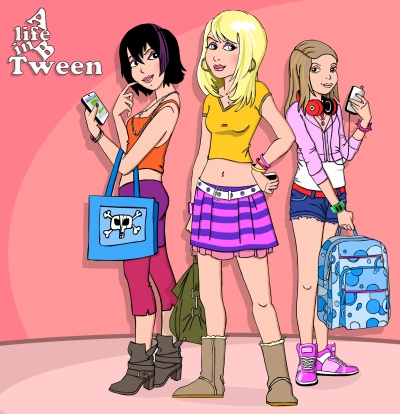
Charlie White, still from A Life in B Tween, 2012, LACMA, purchased with funds from the Ralph M. Parsons Fund, © Charlie White
Is there an element of regionalism in this exhibition, or would these photos have the same meaning if shot outside of California?
These works are about location. Not region, but location—the location of Hollywood, of the California sun as idea, of promise, of blondness, of entertainment and ideas of entertainment. This location is globally recognized; it is a brand, and that is the point. Its role outside of place is far more important than its function within a specific location. It is an export.
Stephanie Sykes



